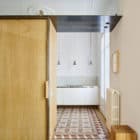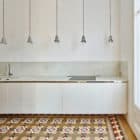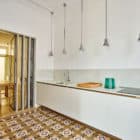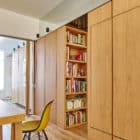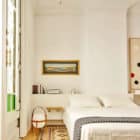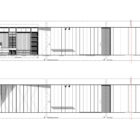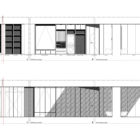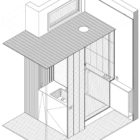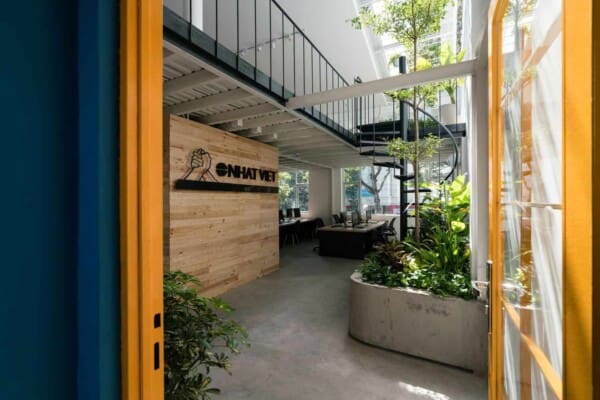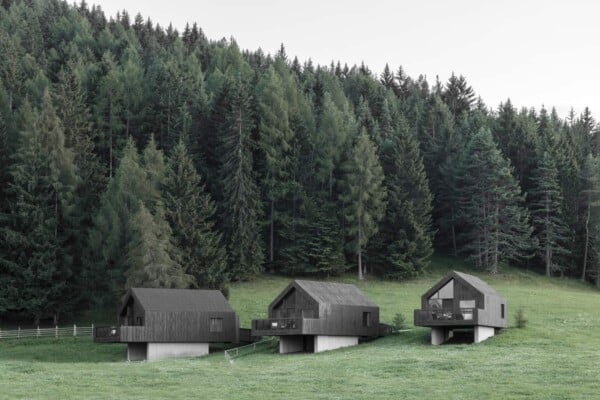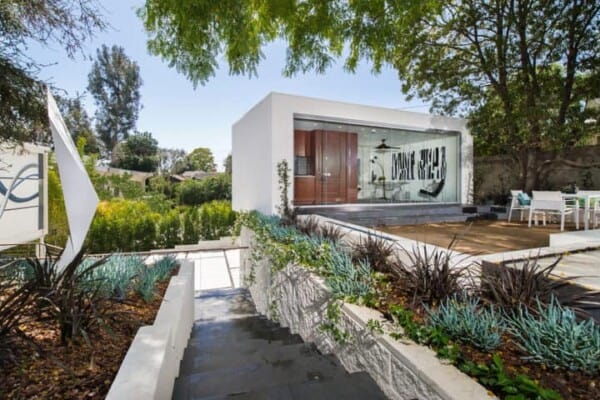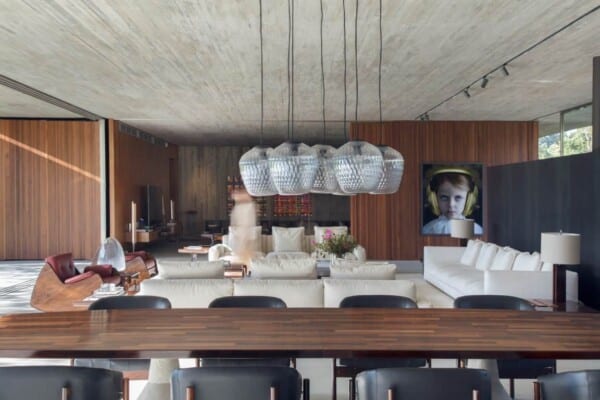House AB is a private residence designed by Built Architecture.
It is located in Barcelona, Spain.
House AB by Built Architecture:
“The challenge is to find a balance between the existing and the new. Recover and revalue the features of the original apartment, while getting rid of any element that blots the vision and distresses the perception of space. The space must be wide and clear.
The project diffuses the central corridor, a typical Eixample feature with abundant doors and hallways, in order to merge the space around a new central piece of furniture. Such central element is used as a divider between public and private areas and develops along the length of the apartment. Simultaneously, it hosts the storage needs of the apartment whilst organizes and distributes the floor in three different areas.
The design recovers and uplifts both the original modernist mosaics and the high ceilings with gypsum mouldings. The project frames all recovered mosaic with a natural oak tree parquet which resemble colourful carpets mounted on the pavement. The central furniture element, built with the same natural oak tree, rises from those frames as a great sculpture that contracts and fractures itself in order to fly over the mosaic and to achieve precise alignments with the parquet. All design solutions aim to activate the space contiguous to this central piece, furbishing it with functionalities and activity. Furniture as volume is no longer what counts. The empty space created between the furniture element and the walls of the apartment is now what matters.
The central furniture element reaches 234 cm. (7.67 ft.) in height, which has been considered a domestic, intimate and human scale measure, best suited to the monumental ceiling heights of the nineteenth century. Thus, light is allowed to flow between rooms above the central volume. It is right in this moment, between ceiling and floor, that the true key of the project appears: a subtle black metal plate crowns the oak volume and generates a new distribution of spaces apart from the pre-established by rhythm of rugs and frames. In this way, the space folds, compresses, opens and expands following the demands of the project. Resorting to doors is no longer necessary as the metal plate and wood volume offer walls, and their game of levels and breaks enables the user to perceive and understand the three different areas of the apartment. The transfer between public areas, rooms or service spaces always occurs through a metal threshold. Equally, toilets and showers are located under the metal plate, next to the only interior courtyard that is used for natural illumination and ventilation.
Just like the central piece concentrates all required closets and storage space, including a foldable bed, linen, dryer and washing machine or fridge, the fine metal plate allows and supports all the doors and panels that the new layout demands. Wooden or glass sliding doors pivoting as regular doors, or even shower screens as well as the large mirror in the dressing room are all supported by the metal plate, which holds the necessary ironwork and support frames. In this manner, any distortion between the original elements and those strictly new is prevented.
The perimeter of the apartment is completely free by concentrating the intervention in one single and continuous volume that works as a spine. The juxtaposition of regular cells with of colourful mosaics, gypsum mouldings and lush, pine carved doors and stained glass windows is precisely the flexible and polyvalent value of Eixample flats. Such feature allows the user to continuously adapt the distribution of the flat in response to lifestyle requirement. Thus, the house is offered as a blank canvas in which to easily arrange furniture, paintings, art pieces, objects and family mementos cumulated during a lifetime without feeling inhibited or restricted by the new project.
This is a modernist flat in Eixample where original values are recovered and acclaimed through a new central furniture element, which must be as singular, surprising and innovative as it is discrete, flexible and respectful, always responding to the needs of the user and favouring the life that will develop around it. Consequently, the project is best understood as an art gallery whose main objective is to offer the best possible frame to exhibit art whilst at the same time providing an optimal experience for its users.”





Photos by: Eugeni Pons
















